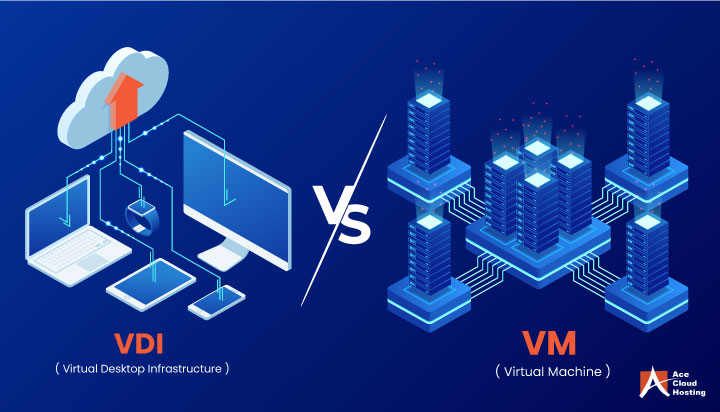Even though cloud computing has existed for a while, it has become more and more popular among organizations as the need for affordable, scalable, and secure IT infrastructures has grown.
The two industry names most frequently used in relation to virtualization are virtual desktop infrastructure (VDI) and virtual machine (VM) like horizon desktops.
Virtual Desktop Infrastructure (VDI): What Is It?
VDI is a method of desktop virtualization that makes use of virtual machines (VMs) such as the horizon desktops to supply and manage virtual desktops and applications. On computers in a data center, VDI maintains the desktop environments, including the OSs, programs, and desktops, and then delivers them to end users as needed.
From an endpoint, you may access VDI and control the OS, along with the programs and data, as if they were operating locally. By doing this, VDI may provide users with secure access to corporate data and applications on practically any device and platform, especially thin clients and portable devices.
In contrast, traditional IT infrastructures need you to access computer resources through physical, portable personal devices. To give users access to virtual desktops, VDI makes use of many components. These are some of these elements, for example:
-
Hypervisor
It divides actual servers into virtual machines (VMs), which in turn host virtual computers and software.
-
Connecting agent
It allows users access to any virtual desktops that are accessible. When managing numerous hosts with various virtual desktop pools, connection brokers are helpful. They offer a method for users to sign in. They are sent to the proper desktop pool via connection brokers.
Balancer for loads Workloads are equally distributed among several hosts via a load balancer.
This prevents any host from becoming overloaded while others are dormant. The connection broker may occasionally serve as a load balancer.
-
Customer software
Each endpoint uses a client application to connect to the VDI. Any remoting protocol, including Computer over Internet Protocol (PCoIP), Remote Console Guidelines, as well as Independent Computing Architecture (ICA), can be used by client applications to establish connections to servers.
A Virtual Machine: What Is It?
VMA vs. VDI A virtual machine is a program that acts like a real computer. A virtual machine (VM) is similar to building a computer inside a computer since it has its own CPU, storage, memory, and network interface.
A physical computer running Windows Server 2019 can, for instance, host a guest machine or other virtual machine running Linux or macOS.
You need a hypervisor to simulate the real hardware’s resources, such as the CPU, RAM, hard drive, and network interfaces. A hypervisor views the resources of the actual hardware as a pool that can be readily shared by already-existing virtual machines or used to generate new ones.
Every OS running on a virtual machine behaves exactly as it would on host hardware, giving users a virtually similar experience to the real thing. Because of this, VMs are excellent settings for testing other OSs, like beta releases, generating backups, conducting disaster recovery, and accessing Alldata afflicted with viruses.
What Are the Various VDI Types?
Depending on your user’s needs, you may set up VDI as permanent or non-persistent.
-
Constant VDI
Stateful VDI, also known as persistent VDI, is a virtual desktop infrastructure approach that allows end users to keep track of their customized settings, save information, and even create instances they may access at any time. Persistent VDIs function just like physical PCs since they permit complete customization.
-
A transient VDI
The virtual desktop infrastructure solution known as non-persistent VDI, also known as stateless VDI, prevents end users from retaining their data and configuring desktop instances since they are destroyed after each session.
You cannot have the same experience as you would with a conventional PC since they do not permit any customizing.
A VM is a virtualized computing platform (horizon desktops) that functions as a conventional physical computer and has its own CPU, storage, memory, and network adapter. In contrast, VDI uses VMs to create and administer virtual desktops, including applications.





Leave a Reply